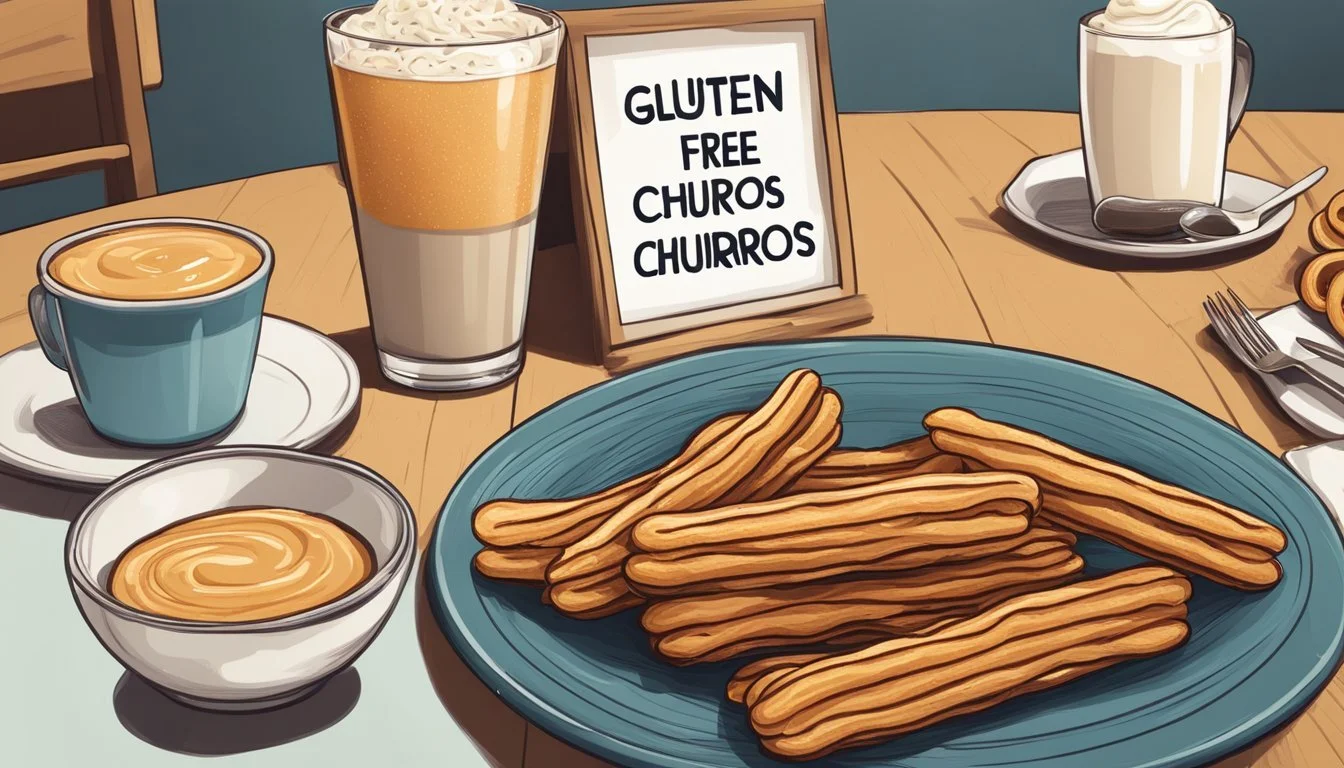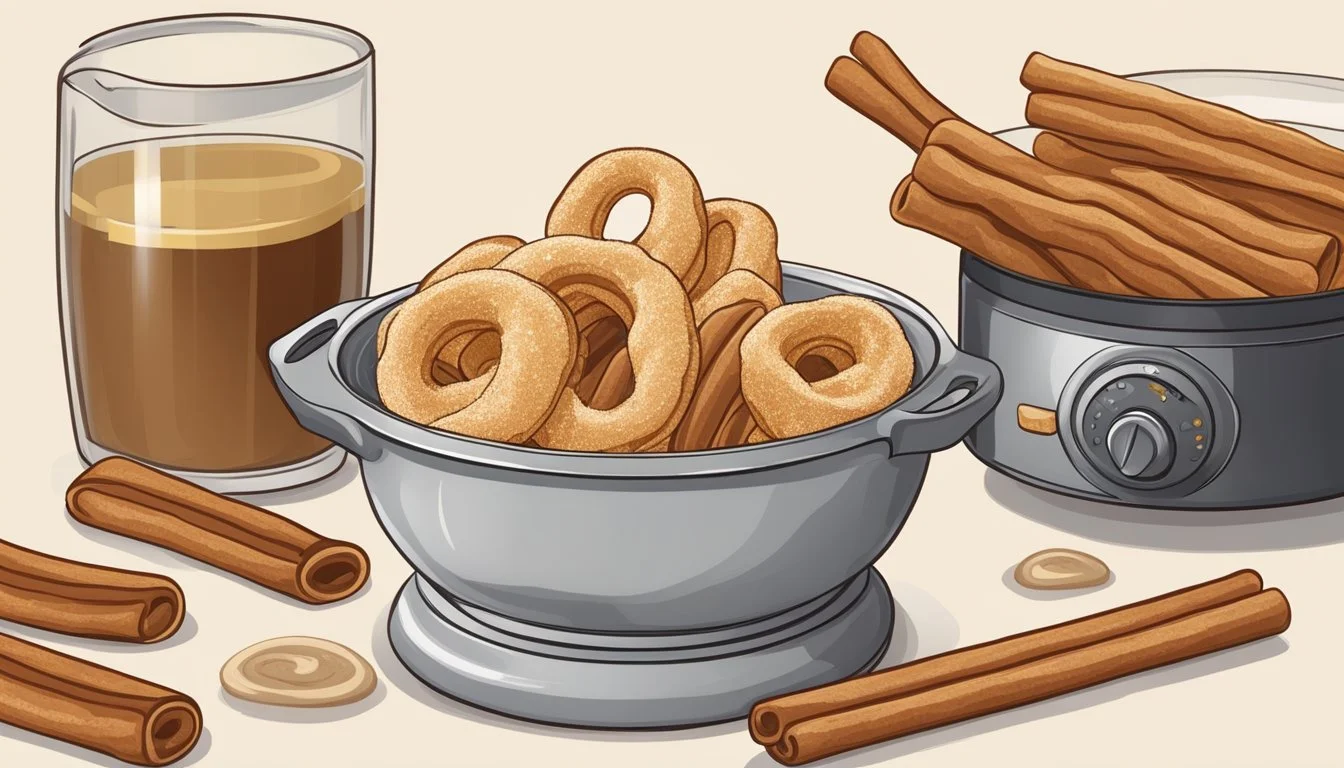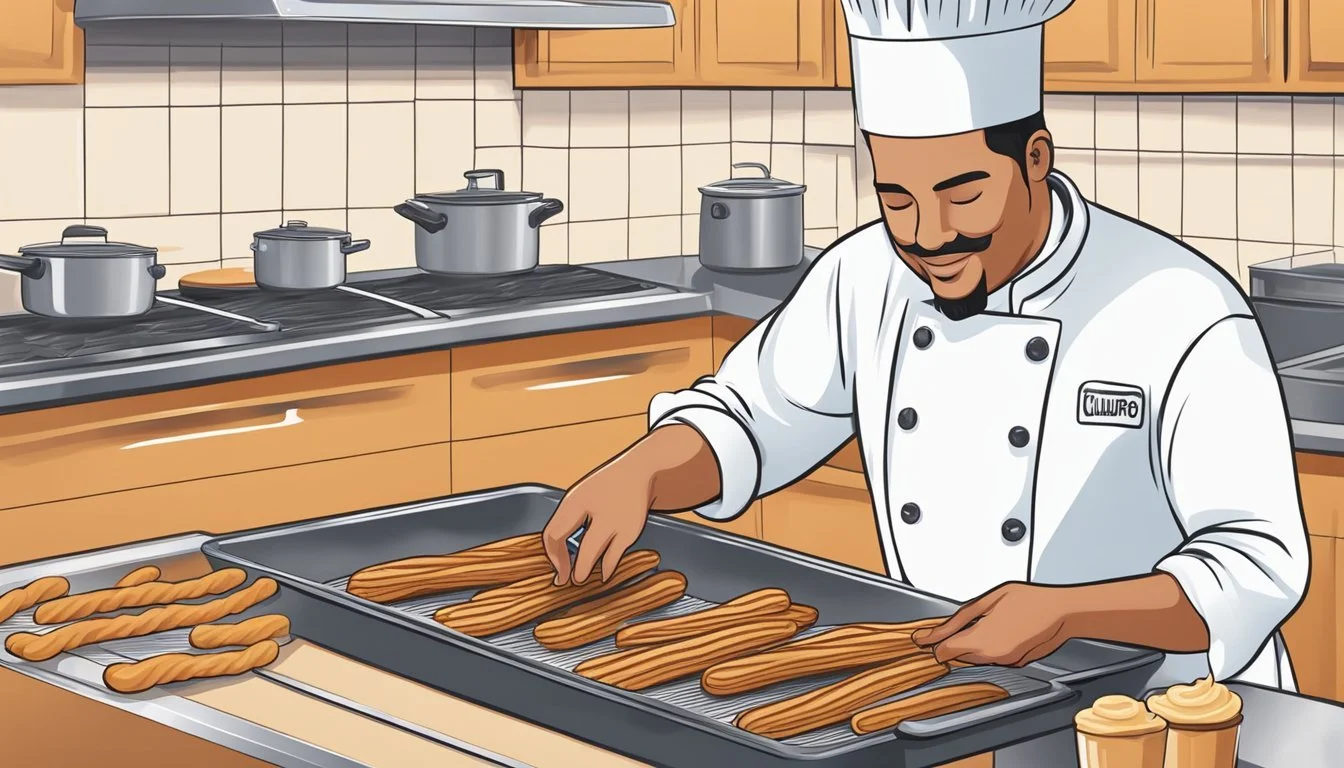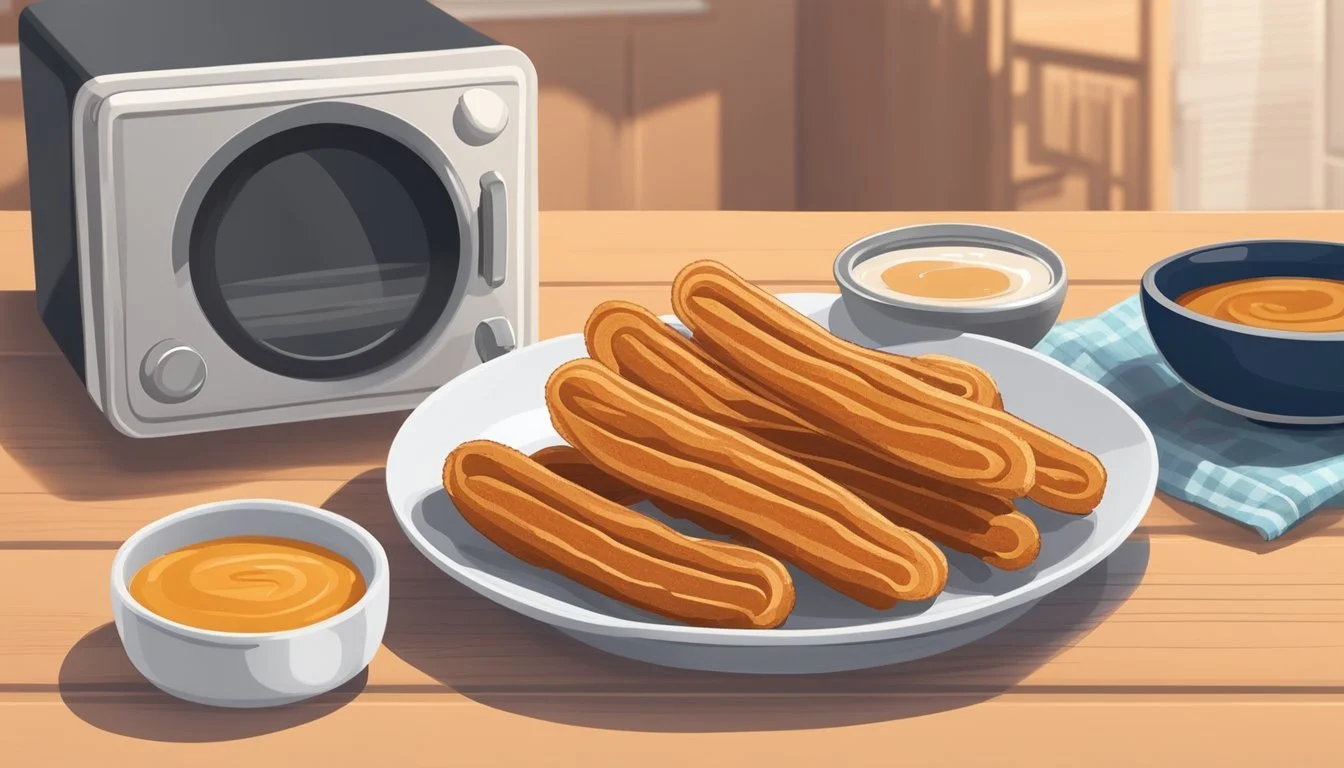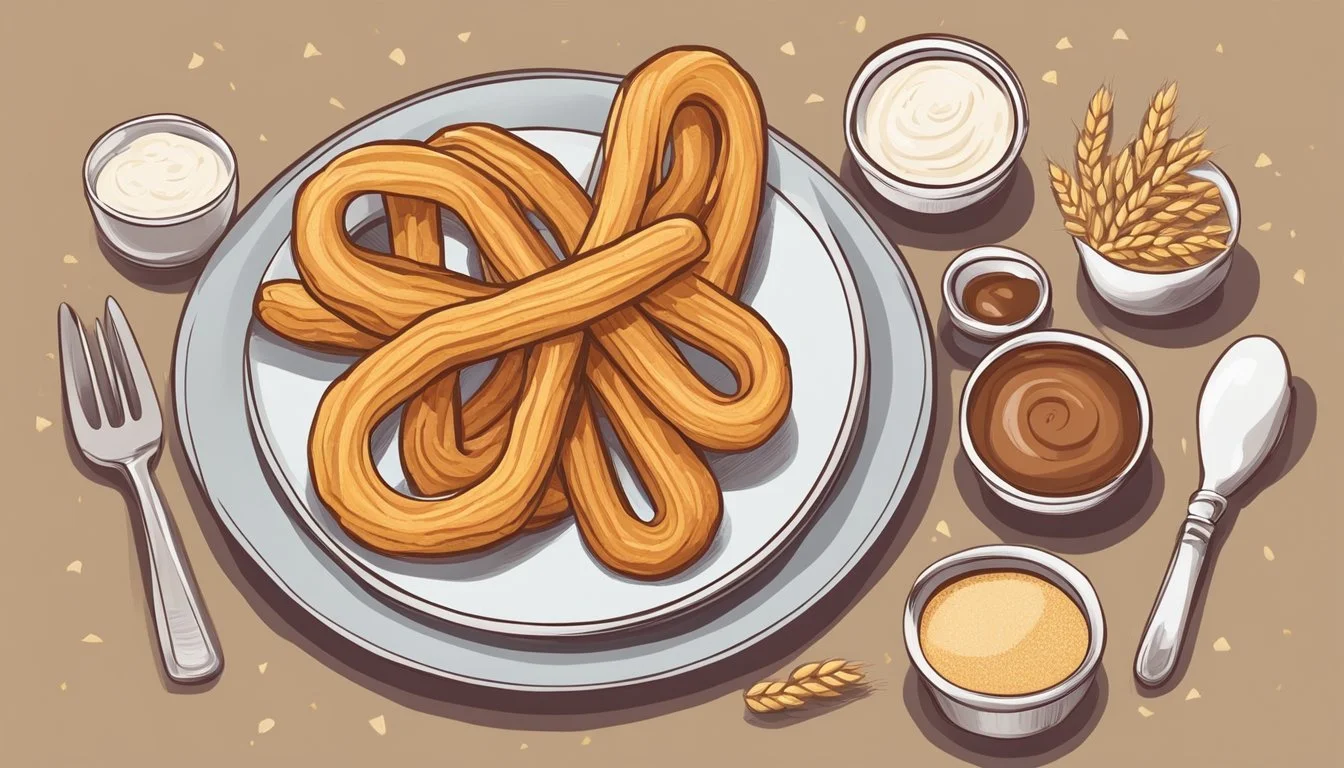Are Churros Gluten-Free?
Understanding Their Ingredients and Preparation
Churros are a popular dessert known for their sweet, crunchy exterior and soft, airy interior, traditionally made from a dough comprising wheat flour and deep-fried to golden perfection. Originating from Spain and Portugal, these treats have gained international acclaim and are often paired with a chocolate sauce for dipping. However, for individuals with celiac disease or gluten intolerance, consuming desserts made with traditional wheat flour is not an option due to the presence of gluten, a protein that can cause adverse health effects in sensitive individuals.
The rise of gluten-free diets has spurred culinary innovation, allowing even classic desserts like churros to be adapted into gluten-free versions. Gluten-free churros substitute wheat flour with alternative flours such as rice flour, almond flour, or commercially available gluten-free all-purpose flour. This ensures that the churros maintain their characteristic texture and taste without the gluten content, making them a safe and enjoyable option for those avoiding gluten. The challenge in creating gluten-free churros lies in replicating the texture that gluten imparts, but with the right ingredients and techniques, gluten-free churros can be nearly indistinguishable from their traditional counterparts.
As the availability of gluten-free products continues to expand, options for enjoying gluten-free churros are more accessible, whether at home with DIY recipes or at select bakeries and restaurants that cater to gluten-free dietary needs. Ensuring that the preparation process avoids cross-contamination is crucial for those with severe gluten sensitivities or celiac disease, as even trace amounts of gluten can provoke symptoms. With this in mind, food establishments that offer gluten-free churros often take special care to avoid cross-contact with gluten-containing ingredients, making it possible for more people to indulge in this beloved dessert safely.
What Are Churros?
Churros are a traditional Spanish pastry known for their distinctive shape and role in various celebrations. They are prepared by frying dough, which creates a golden-brown exterior with a soft and tender interior. The dough, made from wheat flour, gives churros their characteristic chewy texture.
Originating from Spain, churros have become immensely popular at various events and cultural celebrations worldwide. They are often associated with festive occasions such as Carnival and Cinco de Mayo. The pastry's popularity has spread to many countries, and it is regularly enjoyed in regions outside of Spain.
Typically, churros are piped through a star-shaped nozzle, resulting in a ridged surface which enhances their crispiness when fried. Once cooked, these elongated pastries are commonly coated with sugar, and are frequently accompanied by a chocolate or caramel sauce for dipping.
As a fried dough pastry, churros are naturally not gluten-free due to the presence of wheat flour. However, with the rising prevalence of gluten sensitivities, many adaptations of the traditional recipe using gluten-free flour blends have become available.
Attributes Details Origin Spain Consistency Fried dough Shape Extruded, star-shaped Occasions Carnival, Cinco de Mayo Dipping Sauces Chocolate, Caramel
It's important to note that while they are ubiquitous in certain celebrations, churros are also enjoyed as an everyday treat in Spain and many parts of the world. They are typically served warm, offering a comforting and satisfying experience.
Gluten-Free Diet Basics
In exploring gluten-free dietary choices, one must have a clear understanding of what constitutes gluten and the health benefits associated with a diet devoid of this particular protein. Making informed decisions requires a thorough grasp of the essentials.
Understanding Gluten
Gluten is a family of proteins found primarily in wheat, rye, and barley. The two main proteins in gluten are gliadin and glutenin, with gliadin being responsible for most of the negative health effects. When flour mixes with water, these proteins form a sticky network that has a glue-like consistency, giving dough its elasticity and bread its chewy texture.
For individuals with celiac disease, gluten consumption triggers an immune response that damages the lining of the small intestine. This can interfere with the absorption of nutrients, leading to various health issues. Thus, a gluten-free diet is not just a lifestyle choice but a medical necessity for those affected by this autoimmune disorder.
Benefits of a Gluten-Free Diet
Adopting a gluten-free diet can present several benefits, particularly for those with celiac disease or gluten sensitivity. By eliminating gluten, symptoms such as gastrointestinal discomfort, bloating, and fatigue can be alleviated. Moreover, for those diagnosed with celiac disease, a strict gluten-free diet is the only effective treatment to manage the condition and prevent further complications.
However, individuals without gluten-related disorders may not experience significant health benefits from a gluten-free diet, and it is important for them not to exclude gluten needlessly. For anyone considering a gluten-free diet, they should do so under the guidance of a healthcare professional to ensure they receive all the necessary nutrients.
Gluten-Free Churros Ingredients
Creating gluten-free churros requires precise ingredients that substitute traditional wheat flour while maintaining the treat's signature texture. These components ensure that the churros are light, airy, and flavorful without compromising on their classic appeal.
Flour Alternatives
Gluten-Free Flour: Essential for the dough's structure, a high-quality gluten-free flour blend typically contains a mix of rice flour, potato starch, and tapioca flour.
Xanthan Gum: Often already included in pre-made gluten-free flour mixes, xanthan gum acts as a stabilizer, helping the ingredients bind together.
Binding Agents
Eggs: Crucial for adding moisture and air, eggs help bind the flour and lend elasticity to the dough.
Water: Simple yet essential, water works in conjunction with flour and eggs to create the dough's base.
Butter: Beyond its role in binding, butter contributes to the dough's rich flavor and tender texture.
Flavor Enhancers
Cinnamon: Ground cinnamon gives the churros their distinctive warmth and spice.
Sugar: Apart from sweetening the dough, sugar also provides structure and a slight crunch. It's also used for coating the cooked churros.
Vanilla Extract: A splash of vanilla extract enhances the overall flavor complexity of the dough.
Preparing the Gluten-Free Churro Dough
The key to successful gluten-free churros lies in creating a dough with the right consistency and employing proper mixing techniques to ensure the texture mimics that of traditional churro dough.
Dough Consistency
The dough for gluten-free churros, often made with a gluten-free choux pastry base, should be thick and smooth. The flour mixture is crucial; it typically involves a blend of gluten-free flours to replicate the elasticity and binding properties of gluten. For the desired consistency, one must heat the wet ingredients—like water, milk, and butter—to boiling before incorporating the gluten-free flour blend. The dough should pull away from the sides of the pan and form a cohesive ball that is sticky, yet firm enough to hold its shape when piped.
Mixing Technique
To achieve the right texture for gluten-free churro dough, the key is in the mixing. After the gluten-free flour mixture is added to the heated liquid ingredients, the mixture should be worked quickly to avoid lumps. Using a wooden spoon or spatula for mixing by hand can be effective, but for a smoother dough, a food processor or electric mixer can ensure even incorporation of ingredients. Once mixed, the dough should rest for a few minutes before it's transferred to a piping bag fitted with a star tip, ready for frying or baking into homemade churros.
Frying Gluten-Free Churros
When frying gluten-free churros, choosing the appropriate oil, maintaining the optimal frying temperature, and observing safety precautions are essential for achieving the desired texture and taste.
Choosing the Right Oil
For frying gluten-free churros, vegetable oil, corn oil, avocado oil, and peanut oil are suitable choices due to their high smoke points. Each type of oil imparts a different flavor, with neutral oils like vegetable and corn oil being more traditional, while peanut oil adds a distinctive taste. Avocado oil is another solid choice, providing a healthier option with a subtle flavor that doesn't overpower the churros.
Neutral Oils: Vegetable, Corn
Flavorful Oil: Peanut
Healthier Option: Avocado
Optimal Frying Temperature
Maintaining a temperature range of 350°F to 375°F is critical for cooking gluten-free churros thoroughly while achieving a golden brown exterior. Utilizing a candy thermometer is recommended to monitor and maintain consistent heat. A temperature too low may result in greasy churros, while too high can burn the exterior before the inside is fully cooked.
Recommended Temperature Range: 350°F - 375°F
Temperature Monitoring: Candy Thermometer
Safety Precautions
When frying, always use a dutch oven or heavy-bottomed pan to ensure even heat distribution and prevent tipping. Never overfill the pan with oil—keeping it two inches from the top—and avoid putting too many churros in at once to prevent oil temperature drops. Always have a lid or fire extinguisher nearby in case of emergency.
Cookware: Dutch Oven, Heavy-bottomed Pan
Oil Level: No More than 2 Inches from the Top of the Pan
Emergency Tools: Lid, Fire Extinguisher
Shaping and Piping Churros
Shaping and piping are crucial steps in creating churros that not only taste delightful but also have their characteristic ridged appearance. Selecting the right tools and techniques ensures churros are uniform in shape and size.
Selecting Piping Tools
The choice of piping tools directly affects the quality of the churros. One should opt for a piping bag or a pastry bag known for their flexibility and convenience. Attaching a star-shaped nozzle or star tip to the bag is essential for achieving the churros' signature grooves. The star tip size can vary, but a 1/2-inch star tip is commonly used for standard size churros. This tip creates pronounced ridges upon frying, rendering the external texture crisp while keeping the inside tender.
Achieving the Perfect Shape
For achieving perfectly shaped churros, one must fill the pastry piping bag evenly with dough to prevent air pockets, ensuring a smooth piping process. Application of even pressure to the piping bag is key while extruding the dough into the hot oil. The length of a churro is typically 4-6 inches, and using scissors or a sharp knife to cut the dough from the tip ensures clean, consistent ends. Careful handling during this step maintains the dough's structure and prevents it from deforming before frying.
Gluten-Free Churros Coating
When preparing the coating for gluten-free churros, the texture and adhering capability are crucial to achieve the right balance of sweetness and flavor.
Cinnamon Sugar Mixture
The classic Cinnamon Sugar Mixture for coating churros typically combines granulated sugar and ground cinnamon in a balanced ratio. To prepare, mix:
1 cup of granulated sugar (white sugar)
1-2 tablespoons of ground cinnamon
Stir the mixture thoroughly until the cinnamon is evenly distributed throughout the sugar. Rolling warm churros in this mixture ensures a consistent and flavorful coating.
Alternative Coatings
In addition to the traditional cinnamon-sugar, various Alternative Coatings can be used to cater to different tastes or dietary needs. Consider these options:
Vanilla Sugar: Infuse granulated sugar with vanilla beans for a different twist.
Chocolate Sugar: Mix cocoa powder with granulated sugar for chocolate lovers.
Spiced Sugar: Blend sugar with spices like nutmeg or cardamom for a warm, aromatic flavor.
Each alternative option can be tailored in quantity to suit the sweetness preference and the desired flavor profile.
Serving and Toppings
Churros are traditionally served warm and often accompanied by various sweet dips and sauces. These accompaniments can greatly enhance the flavor and enjoyment of the churros.
Traditional Accompaniments
The most classic dipping companion for churros is chocolate sauce. A rich and velvety chocolate ganache or a simple bittersweet chocolate or dark chocolate sauce complements the crispy texture of churros flawlessly. To prepare, high-quality chopped chocolate is usually melted and often combined with a touch of cream or milk, resulting in a luscious and smooth consistency that's perfect for dipping.
Chocolate Dipping Sauce:
Bittersweet chocolate: Melting bittersweet chocolate creates a deep, rich flavor.
Dark chocolate: Offers a less sweet but equally indulgent alternative.
Another beloved option is dulce de leche or caramel sauce, offering a creamy, sweet, and slightly toasty flavor that pairs especially well with the subtle sweetness of the dough.
Creative Serving Ideas
For those looking to serve churros in ways beyond the classic methods, there are many creative possibilities. Pairing churros with a varied selection of dips can provide a unique tasting experience. Consider serving miniature churros alongside a flight of sauces — chocolate sauce, caramel sauce, and perhaps even a spiced chocolate variation to intrigue the palate.
Sauce Variety:
A flight of sauces: Offer a selection to cater to different tastes.
Spiced chocolate: Infuse the chocolate sauce with cinnamon or chili for a twist.
Churros can also be chopped into bite-sized pieces and served as part of a dessert platter, incorporating elements such as fruit, nuts, and whipped cream to allow for interesting and contrasting textures and flavors.
Storing and Reheating
When it comes to storing churros, the key is to keep them fresh and crisp. Churros should be stored in an airtight container at room temperature; they usually remain fresh for about 2-3 days.
Reheating
To return churros to their just-cooked taste and texture, it is possible to reheat them:
Oven: Preheating the oven to 350°F is recommended. Place the churros on a baking sheet and heat for 5-7 minutes. This method helps to preserve their crispness.
Air Fryer: For those with an air fryer, they can preheat the device to 350°F and then place the churros in the basket, heating them for 5-7 minutes. An air fryer recirculates hot air around the churros, ensuring a crispy result.
Microwave: While not ideal due to its tendency to make churros soggy, a microwave can be used in a pinch. Cover churros with a slightly damp paper towel and microwave at full power in 10-second increments until hot.
Using these methods helps to ensure that the churros remain as delightful as when first made. Remember that repeated reheating may diminish their quality over time.
Special Considerations
When exploring the gluten-free aspects of churros, it is essential to address specific dietary needs beyond gluten sensitivity. Shifting focus towards allergen information and vegan, as well as dairy-free alternatives, ensures comprehensive understanding and accommodation of various dietary restrictions.
Allergen Information
Gluten-free churros must be prepared with meticulous attention to avoiding cross-contamination with gluten-containing ingredients. Manufacturers and cooks should ensure that separate utensils, cookware, and frying oil are used exclusively for gluten-free items. Moreover, the consideration of other common allergens, such as nuts or soy, is crucial for those with multiple sensitivities.
Vegan and Dairy-Free Options
For individuals requiring dairy-free or vegan options, traditional churros can be adapted using dairy-free milk and vegan butter. When selecting vegan butter, one should opt for varieties that are free of animal derivatives and conducive to achieving the desired texture in churros. If a recipe calls for salt, ensuring kosher salt is used can be important for those observing specific dietary laws.
Troubleshooting Common Issues
When making gluten-free churros, bakers may encounter specific challenges that can affect the texture and taste of the final product. This section provides solutions for common issues related to dough preparation, frying technique, and sugar coating application.
Dough Challenges
Problem: Dough Not Forming a Ball
Solution: Ensure that the pot is removed from heat before adding the gluten-free flour to the hot liquid. Stir the mixture vigorously to help it form a cohesive ball. If it's too wet, add a spoonful of flour; if too dry, add water by the teaspoon until the correct consistency is achieved.
Problem: Dough Too Sticky or Too Firm
Solution: Gluten-free dough can be stickier because of the different flours used. Adjust by adding more flour to firm it up or a little water to soften. Flour your hands or piping bag tip if the dough is sticking too much.
Frying Difficulties
Problem: Churros Absorbing Too Much Oil
Solution: Maintain the oil temperature between 360°F to 375°F. Use a thermometer to check. If the temperature is too low, the dough will absorb excess oil, becoming soggy.
Problem: Uneven Cooking
Solution: Do not overcrowd the pan. Fry in small batches, turning the churros to ensure they cook evenly. They should be golden brown and crispy on the outside.
Coating Complications
Problem: Sugar Not Adhering to Churros
Solution: Roll the churros in cinnamon sugar mixture right after frying while still hot. The residual oil helps the sugar stick. Letting them cool too much can prevent the coating from adhering properly.
Problem: Coating Too Thick or Clumpy
Solution: Mix the sugar and cinnamon in a shallow dish to ensure even distribution. Shake off any excess sugar for a light, even coat.
Recipe Variations and Ideas
When making gluten-free churros, the primary swap one must make is replacing traditional all-purpose flour with a gluten-free baking flour. The best results are often achieved using a gluten-free flour blend specifically designed for baking.
To begin an easy churros recipe, one should have the following core ingredients:
Gluten-free baking flour
Baking powder (if not included in the flour mix)
Salt
Cinnamon
Granulated sugar
Dairy or dairy substitute (e.g., milk or almond milk)
Butter or a dairy-free alternative
Vegetable oil for frying
To ensure a light and airy texture, similar to traditional churros, one should combine gluten-free flour with baking powder if the blend does not already contain it.
Here are steps often found in a typical gluten-free churros recipe:
Whisking together dry ingredients.
Heating milk and butter until just boiling, then removing from heat.
Stirring in the flour mixture until a dough forms.
Transferring dough into a piping bag with a star tip.
Piping dough into hot oil and frying until golden brown.
For how to make churros more interesting, experiment with fillings or toppings such as chocolate, caramel, or fruit sauces. Offering dairy-free substitutes as an alternative to milk and butter can cater to individuals with multiple dietary restrictions. Additionally, employing different shapes and sizes can make the churros suitable for various occasions.
By retaining the essence of traditional churros and incorporating gluten-free ingredients effectively, bakers can provide a delightful treat that adheres to dietary constraints without compromising on taste or texture.
Gluten-Free Churros in Popular Culture
The emergence of gluten-free churros has made waves in popular culture, primarily as food enthusiasts continually seek inclusive options that cater to dietary restrictions. Disneyland, a cultural icon known for its magical experience, is not just a pioneer in entertainment but also in food inclusivity. They've adapted to this trend by offering gluten-free churros within their parks, acknowledging the growing demand from visitors who have celiac disease or gluten sensitivity.
Disneyland Contributions:
Introduced gluten-free churros in response to guest demand.
Ensures a magical experience for all visitors, regardless of dietary restrictions.
Similarly, the concept of Taco Tuesday has broadened beyond tacos to include a variety of Mexican-inspired dishes. Gluten-free churros have become a delightful addition to this weekly celebration, offering a sweet counterpoint to savory tacos and other gluten-free Mexican fare. Restaurants and food bloggers alike have embraced the shift, with gluten-free recipes becoming a staple in the culinary world.
Influence on Taco Tuesday:
Expanded menu options to include gluten-free desserts.
Encouraged restaurants to cater to a wider audience with varied dietary needs.
In social media, influencers and food bloggers have been pivotal in popularizing gluten-free churros. They've transformed this traditional treat into a contemporary indulgence that's both Instagram-worthy and accessible. Through well-crafted visuals and engaging content, they've positioned gluten-free churros as not only a niche delight but a mainstream dessert.
Social Media Impact:
Gluten-free churros are often featured in aesthetically pleasing content.
Food influencers contribute to the treat's widespread popularity.
The gluten-free movement's intersection with popular culture has cemented gluten-free churros as a treat that is here to stay, celebrated both for its inclusivity and its taste.
Resources and Further Reading
When seeking to understand whether churros are gluten-free and how to make them, individuals have access to various resources that can enhance their knowledge and skills. Below is a curated list of valuable materials for individuals interested in gluten-free churro recipes and communities.
Books and Guides:
Gluten-Free Baking Classics by Annalise G. Roberts
The Joy of Gluten-Free, Sugar-Free Baking by Peter Reinhart
Online Resources:
Celiac Disease Foundation: www.celiac.org
Gluten Intolerance Group: www.gluten.org
Recipe Websites:
Communities
Gluten-free communities provide support and share knowledge on preparing gluten-free dishes, including churros. They can be found on social media platforms and forums.
Facebook Groups:
Gluten-Free Recipes & SupportCeliac Disease Support Group
Cooking Forums:
DiscussCooking.com: Gluten-Free Forums Section
Online Videos
For hands-on learners, video tutorials offer step-by-step visual guidance.
YouTube Channels:
Gluten-Free and More
The Gluten-Free Girl
In summary, a wealth of information is available for those pursuing a gluten-free diet or looking to indulge in gluten-free churros. Whether through cookbooks, support communities, or digital content, the resources highlighted here aim to provide informed and accessible guidance.

